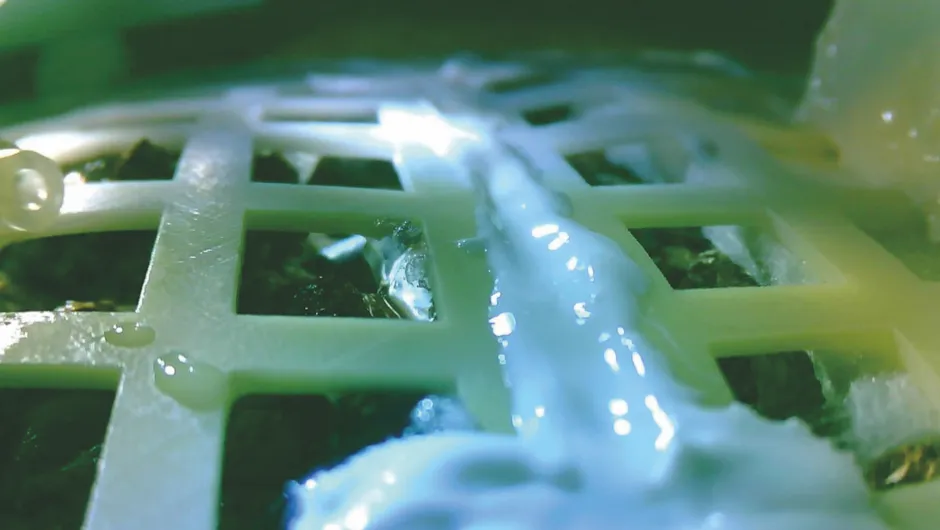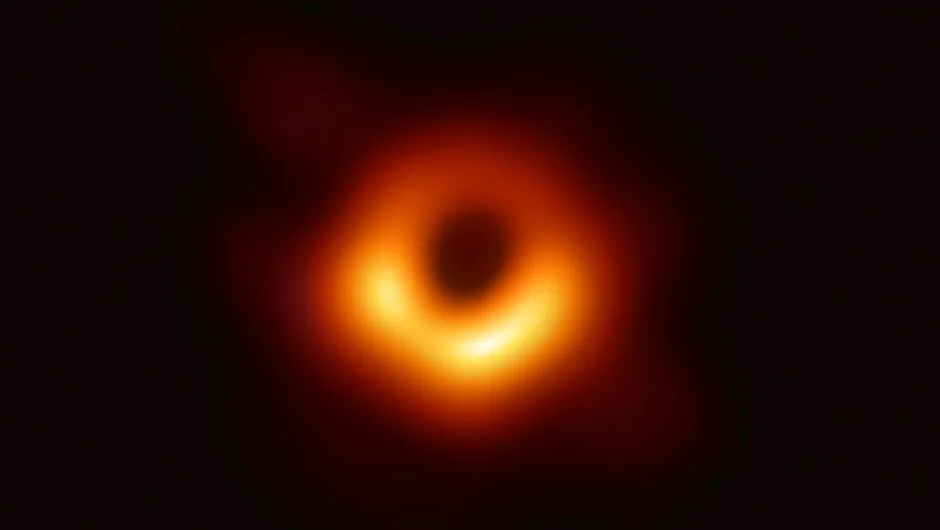First plant grown on the Moon
China’s Chang’e 4 was the first probe to land on the far side of the Moon. It aimed to test whether we could grow plants on another world.

On 3 January, China’s Chang’e 4 became the first lunar probe to land on the far side of the Moon. Onboard was the Lunar Micro Ecosystem biosphere experiment, containing air, water, soil and various organisms. Shortly after landing, the experiment was powered up, the internal temperature was adjusted to 24°C, and the seeds watered.
12 days later, the Advanced Technology Research Institute at Chongqing University reported that cottonseed, rapeseed and potato seed had sprouted, though only images of the cottonseed were released. The success was short-lived, however, when the following day it was reported that the shoots had failed to survive the freezing temperature of the lunar night.
None of the other organisms in the biosphere – mouse-ear cress, yeast or fruit fly eggs – showed any signs of life and the experiment was called off just several days into its planned 100-day stint.
The successful harvesting of plants is seen as a vital part of any long-term space mission, such as establishing a permanent base on the Moon, or even a manned mission to Mars.
China’s next mission, Chang’e 5, is scheduled for launch in 2020. It will attempt to collect samples of lunar rock and soil from the surface of the Moon and return them to Earth. There are also whispers that China’s space agency has ambitions to build a station near to the Moon within the next decade.
Why do we only ever see one side of the Moon?
Thanks largely to Pink Floyd’s 1973 album, astronomers regularly contend with talk of the ‘dark side of the Moon’. There isn’t one. At least there’s no permanently dark side of the Moon.
But we do only ever see the front of the Moon and not the back due to an effect called ‘tidal locking’. Over time the Earth’s gravity slowed the Moon’s rotation on its axis until it matched the time it takes to orbit us (both 27.3 days). So, the Moon is rotating, we just never see the other side.
The Moon is always half lit up and half not (day and night, just like on Earth). Where this sunlight falls depends on the Moon’s position around the Earth. When between us and the Sun the back is completely illuminated – definitely not dark.
The only time it is completely dark is when we are experiencing a full Moon.
Read more about the Moon:
Dinosaurs’ demise deciphered
Scientists drilled into the crater formed by the asteroid that smashed into the planet 66 million years ago.

The asteroid that led to the extinction of all non-avian dinosaurs slammed into the Gulf of Mexico’s Yucatán Peninsula some 66 million years ago. Then in 2016, a scientific drilling project by the International Ocean Discovery Program retrieved rocks from the impact site, which is submerged offshore.
In September this year, a group of researchers based in the US announced they had used the rocks to piece together an account of what happened on the first day of the dinosaurs’ demise.
“It’s an expanded record of events that we were able to recover from within ground zero,” said Dr Sean Gulick, a geophysicist at the University of Texas at Austin and leader of this study. “It tells us about impact processes from an eyewitness location.”
In just 24 hours following the impact, material to a depth of 130 metres was deposited. This included charcoal, which provides evidence for the intense wildfires that are thought to have been ignited by the blast. Meanwhile, the impact also triggered a huge tsunami, as evidenced by jumbles of rock and layers of sand in the core samples, which appear to have been deposited by resurging waters.
One thing conspicuously missing from the samples, though, is sulphur. Although the surrounding area is full of sulphur-rich rocks, the crater is sulphur-free. This supports the idea that the asteroid impact instantly vaporised sulphurous rocks, releasing the sulphur into the atmosphere. It lingered there, and reflected away the Sun’s light, cooling the Earth’s climate.
Although the impact had devastating effects on a regional level, it’s this large-scale global cooling that’s thought to be behind the dinosaurs’ eventual demise, as well as countless other species.
HIV transmission effectively stopped
Conclusive findings of an eight-year study stated that men on antiretroviral HIV treatment have a zero risk of passing on the virus

An antiretroviral treatment developed by researchers at University College London (UCL) and the University of Copenhagen reduced the possibility of passing on the virus that causes AIDS to zero, it was reported in May.
The study, named PARTNER2, involved nearly 1,000 European gay male couples in which one partner was HIV-positive and the other HIV-negative. Over the course of the eight-year study, the couples reported having sex without the use of condoms nearly 80,000 times. None of them was found to pass on the virus to the HIV-negative partner. The researchers estimated that based on the type and frequency of sexual contact, the treatment prevented around 500 HIV transmissions.
“Our findings support the message of the international U=U [undetectable = untransmittable] campaign, that a suppressed viral load makes HIV untransmittable. This message has been endorsed by more than 780 HIV organisations in 96 countries and can help end the HIV pandemic by preventing HIV transmission and tackling the stigma and discrimination that many people with HIV face,” said lead researcher Prof Alison Rodger, who is based at UCL’s Institute for Global Health.
Antiretroviral drugs work by stopping a virus from replicating in the body, allowing the nervous system to recover, therefore preventing further damage. The measure of the number of viral particles present in a given person’s bloodstream is known as a ‘viral load’ and is expressed as the number of copies of the virus found in one millilitre of blood.
In the PARTNER2 study, the treatment kept the viral loads of the HIV-positive participants at fewer than 200 copies per millilitre. When not on antiretroviral treatment, viral load can reach several millions. For anyone on antiretroviral treatment therapy, the aim is to keep the viral load as low as possible.
“Increased efforts must now focus on wider dissemination of this powerful message and ensuring that all HIV-positive people have access to testing, effective treatment, adherence support and linkage to care to help maintain an undetectable viral load,” said Rodger.
Ahead of World Aids Day in December this year, the world’s first HIV-positive sperm bank, Sperm Positive, was launched in New Zealand in an effort to reduce the stigma of those living with the virus. It will accept donations from those living with HIV who have an undetectable viral load.
What are HIV and AIDS?
HIV (human immunodeficiency virus) is a type of virus that causes damage to cells in the human immune system, weakening its ability to fight off infection and disease.
AIDS (acquired immune deficiency syndrome) is the name used to describe the potentially life-threatening illnesses that can arise when the immune system has been significantly damaged by HIV.
AIDS cannot be transmitted from one person to another, but HIV can through unprotected sexual activity or the sharing of needles or syringes.
Read more about HIV/AIDS:
Life could exist among the stars
A team recreated interstellar clouds in the lab, and found hints of DNA in the process.

Simple molecules that make up the basic units needed for life could have formed in the giant clouds of gas lingering between stars, a study by Japanese researchers found in October.
Compounds called nucleobases, the essential building blocks that make up DNA, have been detected for the first time in a lab-based simulation designed to mimic the gaseous clouds that are found in the vast areas of space between stars. The finding brings us closer to understanding the origins of life on Earth, the researchers say.
“This result could be key to unravelling fundamental questions for humankind, such as what organic compounds existed during the formation of the Solar System and how they contributed to the birth of life on Earth,” said Dr Yasuhiro Oba of Hokkaido University’s Institute of Low Temperature Science.
The basic structural unit of DNA is called a nucleotide and is composed of a nucleobase, a sugar, and a phosphate. Previous studies mimicking the conditions expected in interstellar molecular clouds have detected the presence of sugar and phosphate, but never nucleobases.
To make the discovery, the team set up a simulation of an interstellar molecule cloud by pumping a gaseous mixture of water, carbon monoxide and ammonia into a vacuum chamber filled with simulation cosmic dust and cooled it to -263°C. They then shone a pair of specially designed ultraviolet lamps into the chamber to kick-start chemical reactions. This led to an icy film forming on the surface of the dust.
Next, they warmed this substance up to room temperature and analysed its chemical composition using a high-resolution mass spectrometer. They were able to identify the presence of several nucleobases including cytosine, thymine and adenine – three of the four bases that make up all DNA. They also identified several amino acids, which are the building blocks of proteins, another key element for the formation of life.
The team suspects that past experiments simulating interstellar molecular cloud environments would have produced nucleobases, but that the analytical tools used were not sensitive enough to detect them in complex mixtures.
“Our findings suggest that the processes we reproduced could lead to the formation of the molecular precursors of life,” said Oba. “The results could improve our understanding of the early stages of chemical evolution in space.”
How does DNA work?
In 1953 James Watson and Francis Crick found that a DNA molecule is arranged like a long, twisted ladder, which is a structure that we call a double-helix. Each ‘rung’ of the ladder is made up of a base pair – two joined chemical building blocks called nucleotides.
There are four different types of these nucleotides: adenine, cytosine, guanine and thymine, which we call A, C, G and T. An A always links to a T, and a C always links to a G.
The exact order that the different letters are arranged on the ladder varies, forming an enormously long code. Human DNA, for example, has about three billion ‘rungs on the ladder’. This complex code will be different for every person and every organism (apart from identical twins), and is known as our personal DNA sequence or genome.
Read more about DNA:
Black hole photographed
Event Horizon Telescope captured first-ever image of black hole.

In April, the first image of a black hole was released by the Event Horizon Telescope (EHT) Collaboration, an international organisation made up of scientists from 40 countries. They captured the image of the supermassive black hole found at the centre of M87, a supergiant elliptical galaxy located in the constellation Virgo.
The researchers were awarded The Breakthrough Prize in Fundamental Physics in September, bagging them $3m in prize money.
A black hole is dark because its gravitational pull is so immense that no light can escape. What shows up in the image is the material surrounding the event horizon, often known as the ‘point of no return’, around the black hole.
Inside the event horizon, any matter or light is doomed to fall inwards. However, outside the event horizon, material swirls around the black hole at near light speed. Gravity and friction heat up the matter, which then glows with radio waves. It was these radio waves that were collected by the EHT.
The data was gathered over the course of a week-long series of observations, using eight telescopes in cooperation. At 55 million light-years from Earth, the supermassive black hole appears far too small in the sky for any one telescope to capture on its own.
To pick out the tiny target, the EHT Collaboration combined the resolving power of eight telescopes around the world, effectively creating a virtual telescope the size of the Earth that can image objects that appear a million times smaller than the edge of a razor blade held at arm’s length.
Event horizons are among the most extreme environments in the Universe, and any unexpected observations could point to previously undiscovered physics.